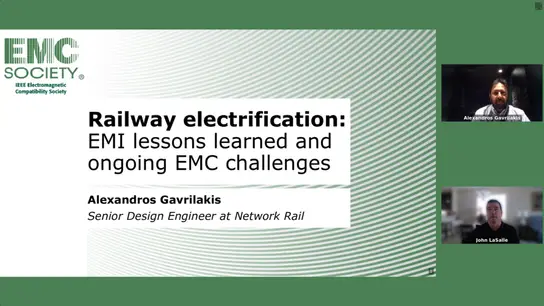Analysis on Common to Differential Mode Conversion within Automotive Communication Systems
Carina Austermann, Stephan Frei
-
Members: FreeEMC
IEEE Members: $11.00
Non-members: $15.00Length: 00:19:38
10 Aug 2021
Communication systems with high data rates like CAN FD and Automotive Ethernet are increasingly used in automobiles. New safety-critical driving assistance functions can be realized with the help of these bus systems, but data transmission has to be very reliable. Road vehicles are a challenging electromagnetic environment because of the high density of electric and electronic devices. Power electronic systems can be very close to communication systems. The typical cable type for automotive communication systems is the unshielded twisted wire pair. Common mode disturbances cannot be reduced by this cable type. Due to unavoidable asymmetry in the communication system electromagnetic coupling can also induce critical differential mode voltages. For this reason, the immunity of communication systems to electromagnetic interferences has to be investigated in detail. In this paper, simulation models are presented and validated by measurements to quantify cable coupling to CAN FD and 100BASE-T1 Automotive Ethernet. Both, common and differential mode voltages caused by cable coupling are investigated. Based on measurements and simulations critical influencing parameters on mode conversion are discussed.


